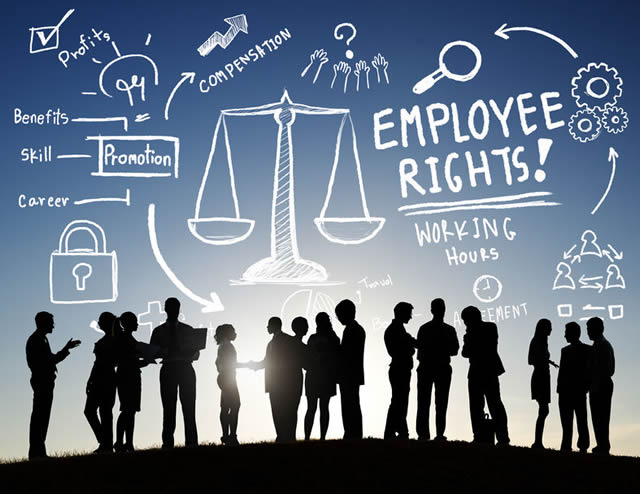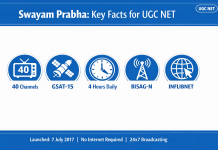This article has been published by Anjali Suneja, Diploma in Labour, Employment and Industrial Laws for HR Managers Strategic HR management from LawSikho.
It has been published by Rachit Garg.
Table of Contents
Introduction
It is said that “the best tool to manage humans at work is providing them a pleasant work environment, making them feel valued and giving them a happy healthy work culture with work-life balance.” When people feel better at work, their productivity will be better.
In any organisation, the most valued asset is PEOPLE, as they are the main contributors to achieving the company’s goals.
Considering the need to have a positive and productive environment at the workplace, HR needs to make some strategic planning that helps boost employee morale, retention, and ultimately the productivity of the organisation. HR strategic plan is a platform where HR visualises and communicates the organisation’s objectives, key results areas and indicators to improve HR management and to ensure that the new strategy meets the needs of both employees and the employer at the company.
An HR strategy plan is a document that helps employees and employers to shape their goals, ideas and thoughts in a way that makes it easy to achieve them and to be in a WIN-WIN situation for both employee and employer. But in this rapidly changing time frame, how do HR plan and design strategies that will directly thrust the company toward goals?
This article provides an introduction, definition, and information on strategic HR management. The article discusses the following:
- Assessing the organisation’s current environment.
- Role of statements of mission, vision and values.
- 4W of strategic HR management.
- Key Elements of strategic HR plan.
- Benefits to HR to engage in strategic planning.
- Implementing, monitoring and evaluating the HR strategic plan.
Defining strategic human resource management
According to a few HR practitioners, strategic HR management and planning is a behavioural method used to forecast HR needs. Others say that it is a managerial side, it is a way that decision-makers use to tackle human resource-related issues.
In an easy way, we can say that strategic HR management and planning is a process to formulate and implement an organisation’s long-range business plan, that guides the HR to take day-to-day decisions while handling people at work.
For a successful HR strategic management plan an organisation must have a well-communicated purpose, mission and vision, and values of the organisation. The purpose of strategic HR management is to help the business to meet its objectives through people. In order to do so, the mission of strategic HR management is to create innovative solutions to attract, develop, engage and retain a diverse workforce and to make the business a great workplace. This will help in achieving the ultimate mission of strategic HR management, which is to cultivate a work environment with the most engaged, highly productive and diverse workforce.
Process of strategic human resource management
The human resource strategic planning process is important for any organisation to determine how the workforce should be developed to meet business needs. But despite its importance, there are organisations that do not have a strategic human resource planning process in place.
If you are planning to implement strategic HR planning in your organisation, this article will explain what it should contain and how to document your plan.
Strategic human resources management consists of the following steps
- Define the company’s objective.
- Access the current HR capacity.
- Forecast future demand.
- Analyse the gaps.
- Human resource action plan formulation.
- Implementation of HR Plan.
- Monitoring, control and feedback.
Defining organisational objective
The first step is critical as it explains what the organisation wants to achieve in future. In this step, the organisation’s mission, values, and culture play an important role. The Organisation’s mission statement and its purpose of strategic planning must be in sync. If management or leaders have differences in their expectations, it must be discussed. Thus, it is vital to communicate the mission and objective of the organisation.
To develop an effective HR plan it is important to align HR practices to organisational strategic objectives. In today’s world HR works hand in hand with the company’s top management so they have a clear understanding of company goals, and accordingly, they can focus on human capital to achieve those objectives.
Assessing the current HR capacity
The second step of HR strategy planning is to assess the human capacity of the organisation. The HR manager needs to identify the skill set, qualification, certification, and any additional training employees have done. A skill matrix can be created for each employee.
HR managers must know what talent pool they have apart from their current job role expectations. For example, customer relationship executive employees may also have strong data entry knowledge. HR managers can pick up on these less obvious talents through regular conversations with employees through both informal and formal channels. Personnel files available in data rooms already have a wealth of information that can help HR to monitor employees’ skills, like:
- Employee resume
- Education and qualification history
- Certifications
- Previous performance reviews
- Projects completed
Having a system where employees can update their skill set, new certifications and training they have done and skills they have added to their profile can help to keep track of employees’ talents much easier. At the same time, when employees know that HR is making note of their responsibilities, strengths and learning they feel motivated.
With the help of the above data, now HR can check which job role needs to be filled based on the forecast, and map current human capital, their skill, potential and performance with the KRA of that role and you can then decide whether you have internal resources available to fill that role or if you need to go to add the external resource.
Forecast future demands
In this step, the question “Where do we want to be?” will be answered in order to forecast human capital demand in organisations. This will include deciding the number of employees with the right quality and quantity that the company is targeting over a specific period of time. When gaps in the workforce and skills are forecasted, HR can plan to hire and training to ensure that the required talent is available when needed.
Forecasting methods
5 Most commonly used HR forecasting techniques are:
i) The Markov model
The Markov model is a quantitative HR forecasting tool. Using the Markov Model, the HR manager lists down the education, qualification, work experience, skills, roles and performance levels of the workforce. In this, HR managers update and maintain the skill reports of the workforce on a regular basis, this way they keep a check on the future talent and skill demands. Reports allow HR managers to know the internal supply of the workforce and the need for external hires. This technique is majorly used in telecommunications, engineering and economics.
ii) Workload analysis
This technique is useful when the estimated workload can be measured easily. In Workload Analysis method, the total expected production or expected service delivery is for a prescribed period. Based on past data, the HR team estimates the required workforce that will be hired to reach the expected production capacity. Demand for the workforce is forecasted based on the total production estimated and each employee’s contribution to delivering each unit.
iii) Managerial analysis
The managerial analysis is a technique for forecasting short-term workforce needs. In this method, managers assess the future needs of the workforce in their teams in all categories. For the forecasting of the workforce by skill category, managers will need to collect data related to employee skill, reskilling, upskilling, retirement and more.
iv) Nominal group technique
It is a method of forecasting demand using expert assessments. In this, the HR manager identifies people who hold key positions in organisations and forms an expert panel. This panel is presented with a set of forecasting-related questions. Based on their knowledge and experience panel members share creative ideas and innovative solutions to the issues. These ideas are collected anonymously and the panel is asked to vote on each idea, this way they finalise one idea out of all.
v) Delphi technique
Delphi is an important method for forecasting the workforce. In this method managers share their workforce needs with HR managers, HR collects the data, analyses it and prepares a report. The process is considered completed when all the managers agree on the same number of workforce requirements.
Factors affect forecasting
Forecasting is a critical part of strategic management and there are several factors, which affect forecasting. These are :
- Market trends related to employment
- Requirement of replacement
- Current team’s productivity
- Workforce absenteeism
- Plan for business or service expansion.
Analyse the Gaps
Once you have done the forecasting, you will have a clear idea of future requirements of the workforce and if they are available internally on a full-time/part-time/contractual basis or you need to hire externally.
When HR managers perform gap analysis, they will assess the organisation’s HR practices and infrastructure to know where the organisation is lagging behind. If the right number of employees is available but the desired skills are not available with them they can be trained and developed so they will be upgraded and the gaps can be filled.
Human Resource Action Plan Formulation
Information and data collected from the gap analysis will help to review the current workforce status: Do you have the sufficient workforce available? Do they possess the desired skill set? Based on this, the HR department will formulate an action plan to finalise the need to recruit new talent or internal transfers.
Implementation of HR Plan
Implementation of the HR action plan is the most challenging step. In some cases, companies do invest huge money to implement the plans but those plans are not utilised properly. Company executives should share plans and associated benefits, to bring them on board. To overcome employee resistance to the process one plan should be rolled out at a time, so employees can be adjusted to the changes. The best way to implement a new HR strategy plan is to conduct training and gradually shift to a new culture.
Monitor, Control, and Share Feedback
Rigorously observing progress helps to identify whether your plan is working well or it needs some changes. The HR plan is a base document for organisational operations that should be changed on the demand of circumstances. Ongoing evaluation and constant improvement efforts will keep the organisation moving towards its strategic goals.
Benefits of strategic human resource management
The supreme benefit of strategic human resource management is the improvement of organisational performance by incorporating and aligning with business strategy, by focusing on how the organisation’s human resources work.
Strategic human resources management helps in achieving lesser turnover and employee absenteeism, enhanced employee experience and job satisfaction, better productivity and profits. This promotes positivity in the workplace, which translates to better employee and customer satisfaction. It also has several financial benefits in the form of high sales, higher asset values, better returns on investments and higher profits and market share.
Other related benefits are:
- Finding new methods of human capital valuation.
- Better allocation of resources to all organisational operations
- Helps to plan a better performance management system
- Provide a guideline & direction to the workforce
- Strategic planning
- Better policies and timely review
- Support of higher management
- Redesigning of HR processes
- Outsourcing of non-value-added HR processes
- Regular management of HR function
- Reduces risk
- Psychological safety
Challenges in HR planning and execution
Five major challenges of HR planning and execution are:
- Forecasting: HR plan depends on forecasting and forecasting is never 100% accurate which definitely becomes a big challenge in HR planning and its execution
- Workforce Resistance: Sometimes employees become resistant to accepting the changes as they feel that it might increase their work pressure.
- Frequent Change: Unpredictable situations like absent labour, high employee turnover, some changes in technology and fluctuations in the market highly affect HR planning.
- Incompetent Information Systems: If you do not have current and correct data on current employees it will be difficult to make the plan.
- Time and cost Factor: IT is a time taking and expensive process, so most companies avoid it and thus do not know the benefits.
Key factors for the success of strategic human resources management
The following are the factors which help to run a successful strategic human resources management plan in the organisation:
1. Culture: An organization’s culture is known to be its HEART. Culture is the attitude and behaviour that shows how things are done there. Every company tries to build a culture where employees feel “valued, benefited, and committed”.
2. Talent Hiring: It is not easy to find good talent, specifically in this competitive market. Numerous market survey reports show that the biggest challenge faced is recruiting and hiring the right fit for the company. To overcome this challenge a well-drafted recruitment policy and the process can help to find, evaluate, select and hire the best talent for a company. Keeping records of active and passive candidates also helps to build the candidate pipeline.
3. Resource Planning: It is the key factor to consider that the future need of the workforce should be planned well. It plays a crucial role in the company’s success in keep clarity on the current talent of the company and to draft their development plan based on future forecasts.
4. Compensation: Most employees consider compensation as the primary factor when they join a new organisation, If the compensation is not as per their expectation, they would consider leaving the employer. So employers have to make a salary band which is well matched with current market standards. Bonus, incentives, and ESPOs are the recent trends to make the compensation package look attractive.
5. Employee wellbeing: Employee wellbeing should be the top priority for any company. Well-being and benefit plans should be reviewed periodically and based on the current environmental condition. The following should be considered while drafting or reviewing the benefits plans:
- Flexi work hours
- Work-from-home policy
- Vocational leave and family leave options
- Health insurance, dental insurance
- Free of cost health check-up
6. Training and development: Employees can be trained at either work or via classroom training. Every employee should be tracked for their participation and a proper post-training assessment should be conducted. A training budget should be allocated and the trainer and trainee both should be provided with feedback.
7. Leadership and development: Building a pipeline of resources who have the potential to be future leaders should be kept ready. It will help the company to be ready for future needs. HR managers should track the attrition happening in a specific department, it will help to understand the strength of managers leading to the department.
8. Employee engagement: HR should try to keep the employee engaged in organisational activities like training, welfare activities, fun activities, rewards and recognitions etc. Satisfaction surveys can be conducted to know the commitment and engagement level of an employee. Building groups and committees for communication can also help to keep the employees engaged.
9. Employee Relationship: A company should always have an open door policy where employees with their ideas, suggestions, and issues should be well heard. It will make an employee and employer bond stronger.
10. Performance Management System: A transparent performance management system helps to show the effectiveness and productivity of employees at work. It will also show the improvement areas of employees. Using a human resources information system with a performance management module can help to keep records of employee ratings, feedback provided by managers, and their productivity and efficiency reports.
11. Compliance: Every company must operate under these pre-defined legal boundaries, as well as ensure compliance with laws related to provident fund, maternity benefits, employees’ state insurance, compensation and wage codes, paid leaves, and child labour laws, to name a few.
Conclusion
In today’s competitive world, strategic human resources management is a critical part of the success of an organisation. The success of strategic human resources planning contributes to organisational success only when it is well-aligned with company objectives and has an employee-centric approach. When organisations implement strategic human resources plans and their practices, it improves performance drastically. Strategic human resources management of any organisation is influential in employees’ commitment in exhibiting positive and flexible attitudes at work and it is always needed for the image of the organisation. These are critical in relations within or outside of the organisation which are dependent on trust. Employees’ performance and organisational reputation together lead to higher customer satisfaction specifically for service-based organisations. These practices develop a sense of a supportive organisational environment and employee-centric management that ultimately boost the behaviours that contribute to achieving organisational objectives. Thus, strategic human resources planning and implementation practices stimulate business growth. No matter how well the organisational plans are constructed, an employee’s attitude plays a critical role in success or failure.
List of references
- Wilkinson, Michael (2011) The Executive Guide to Facilitating Strategy Atlanta, GA: Leadership Strategies Publishing.
- Stroble, K. R., Kurtessis, J. N., Cohen, D. J., & Alexander, A. (2015). Defining HR Success: 9 critical competencies for HR professionals. Alexandria, VA: Society for Human Resource Management.
Students of Lawsikho courses regularly produce writing assignments and work on practical exercises as a part of their coursework and develop themselves in real-life practical skills.
LawSikho has created a telegram group for exchanging legal knowledge, referrals, and various opportunities. You can click on this link and join:
Follow us on Instagram and subscribe to our YouTube channel for more amazing legal content.
 Serato DJ Crack 2025Serato DJ PRO Crack
Serato DJ Crack 2025Serato DJ PRO Crack











 Allow notifications
Allow notifications



